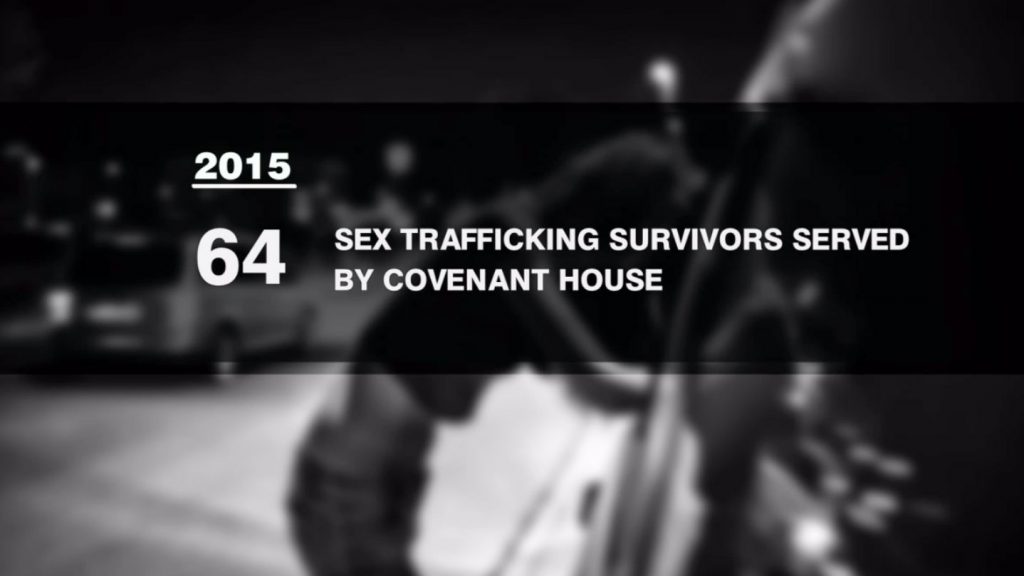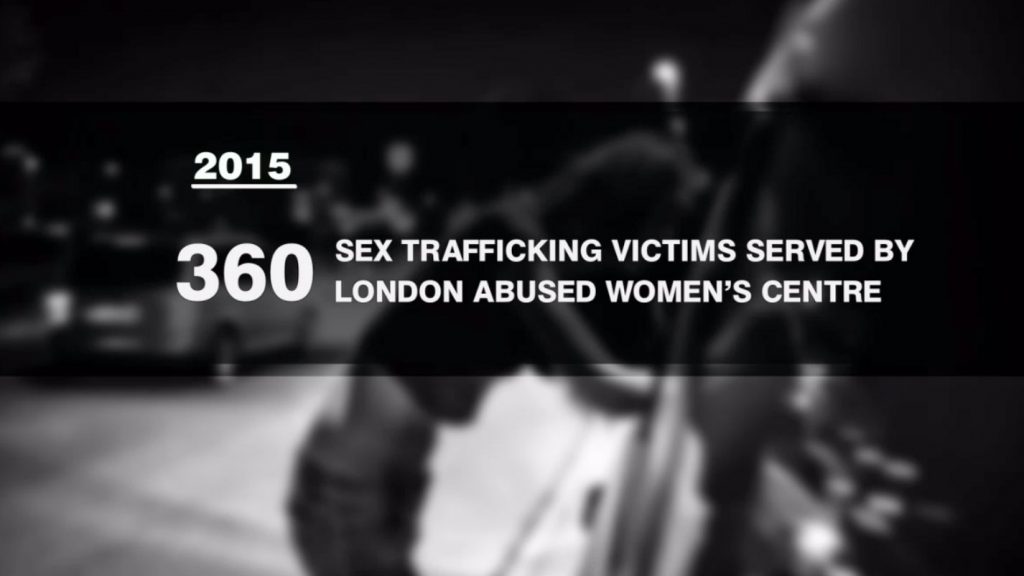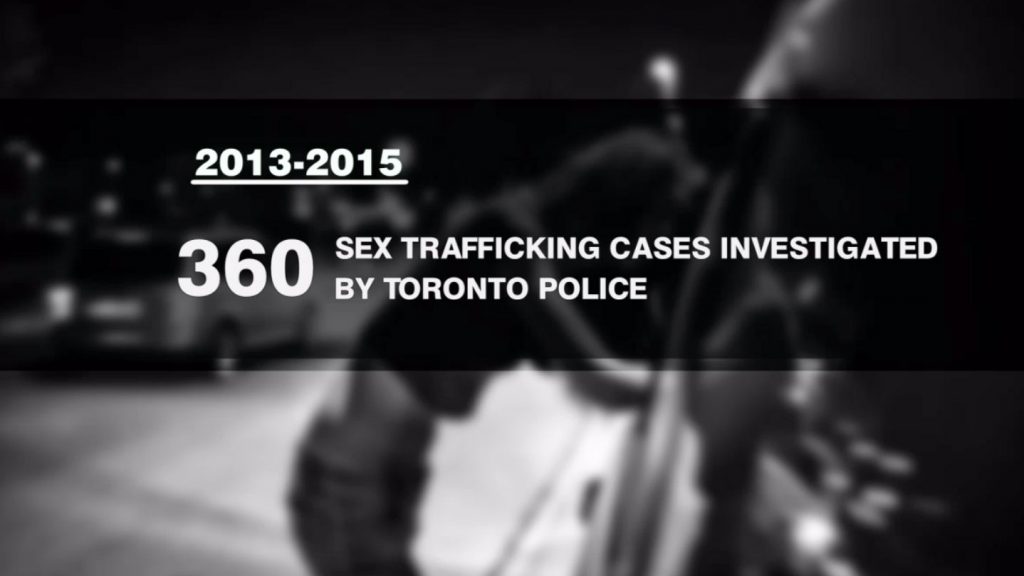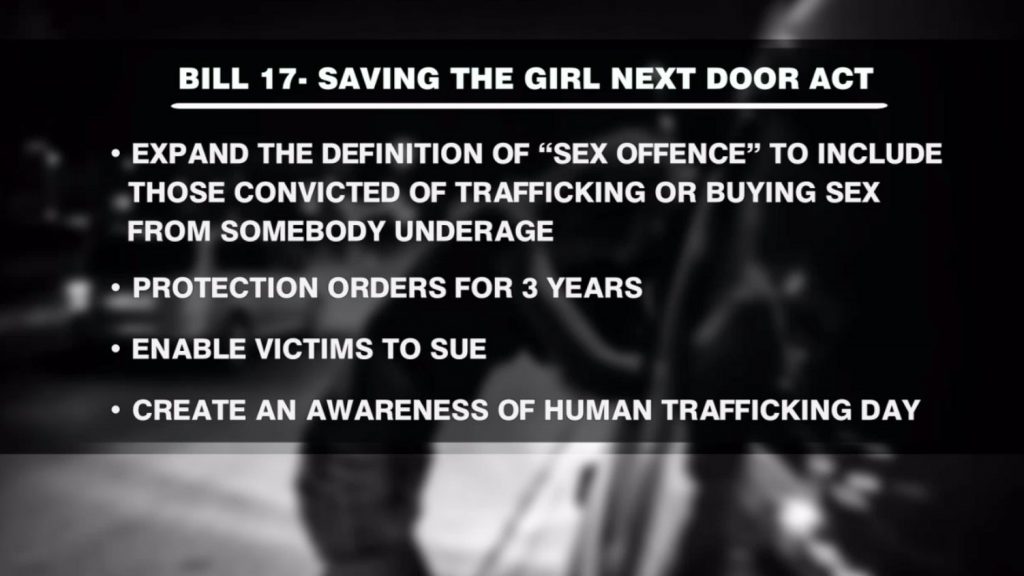Fighting to eliminate Ontario’s dirty little sex secret
Posted October 6, 2016 9:18 pm.
This article is more than 5 years old.
They work around the clock. Thousands of underage girls, boys and women hidden away in motel rooms, apartments or forced to work the streets.
“They are being raped. They are being forced to live out men’s porn fantasies,” explains Megan Walker of the London Abused Women Centre. “The stories are so horrible that we don’t talk about them in public for fear of traumatizing those who hear them.”
One person who is talking about them is Haliburton-Kawartha Lakes-Brock MPP Laurie Scott.
“This is a very evil practice that has been ignored in this province, and it continues to be one of the largest growing crimes.”
Toronto’s Covenant House says they’ve witnessed a 40 percent increase in sex trafficking victims over last year. Toronto Police investigated 360 sex trafficking cases between 2013 and 2015. The London Abused Women’s Centre helped 320 sex trafficking victims last year – in the first six months of this year, they’ve helped 160.

Shocking numbers that don’t surprise Bridget Perrier.
“I was trafficked out of child welfare at the age of 12. I was also internationally trafficked on board the ships of the Great Lakes. I didn’t choose prostitution, it chose me,” she tells CityNews.
She was lured to the industry by other girls in her group home.
“These group homes, where there’s already a girl that’s been exposed and already involved in prostitution. She’s going to recruit the other girls out,” Perrier explains.
The pimps came later.
“An older woman kind of stepped in and became our pimp. To pimp and to be like that, there’s no gender bias. She knew what she was doing and we were striving for that sense of family and we were immediately drawn to her, the mothering and all that. But what kind of mother sends her kids out to turn tricks?”
Perrier escaped that woman’s clutches but like many girls involved in trafficking, she fell prey to a so-called boyfriend. He said he loved her, but sold her daily.
“I knew that he didn’t love me, he was all talk and I just had to walk away. You don’t send someone to a corner and say you love them.”
“For me I had enough, I was either going to die doing it or die getting out.”

She got out but not unscathed.
“I have body tear and wear from prostitution. I can’t have a baby naturally. I have to have caesareans. That’s from servicing grown men at the age of 12,” Perrier says.
“I cannot be around certain types of men, certain smells trigger me, certain men trigger me. I try not to let it rule me. I try to have rules so I can cope with it, and I’ve been out of the business, out of prostitution for 18 years. But I still have night terrors, sometimes I sleep with the lights on. I have a big dog that I know he’s going to protect me and my children but I still to this day have the reoccurring nightmares.”
For all her pain, all her work, she didn’t earn real money, that went to her pimp. And for pimps, it’s a lucrative business. A single underage girl can net a pimp over $250,000 a year. And the victims aren’t who you may expect.
“Over 90 percent of the victims are born in Canada, about 60 percent reside in Ontario and the average age is 14,” explains Scott.
“The girls are trafficked in and out of the cities on an ongoing basis. They may be in Windsor one day, and then they’re in London and then they’re in Cambridge, often spending a couple of days in Niagara Falls,” says Walker. “We can’t say ‘we have this many Toronto residents or London residents today’, because its so fast, this is how they operate.”
Johns are often found through ads on sites like backpages.com.

Scott says the only way to protect vulnerable people from being preyed on by traffickers is to make life easier for victims.
She’s re-introduced Bill 17 – the Saving the Girl Next Door Act, a bill that died when the government prorogued last month. The bill allows a survivor to sue their trafficker for damages and expands the definition of “sex offence” under Christopher’s Law to include offences related to the trafficking and purchasing of sexual services from minors. It would also create a human trafficking awareness day, and give courts the power to file a protection order against the trafficker, ensuring that they have no contact with the victim for three years.
“We can not ignore this crisis any longer,” she says.
Perrier wishes this law had been in place when she was getting out.
“I wish I could go back and charge the person who exploited me. He’s never been caught, she’s never been caught either.”
She says the bill would give survivors a chance to seek true justice by going after the trafficker and “hitting them in their wallet.”
The bill was debated on Thursday in the legislature and is headed to the justice committee for consideration. It made it to that stage last time Scott introduced the bill but the government-controlled committee didn’t call the bill up for debate. Walker says this government isn’t taking sex trafficking seriously.
“If it were a sickness or health concern, the government would be stepping in immediately to stop this. But for some reason, when it has to do with women and girls that are being sex trafficked, the government doesn’t want to take action.”
Tracey MacCharles, the minister responsible for women’s issues, acknowledges there’s a problem.
“Trafficking results in very few charges, fewer convictions… the conviction rate is actually in the single digits, fewer than 10 percent.”
In June, the province unveiled its 4 year, $72-million strategy to combat human trafficking, a plan that involves increased training for justice partners and the creation of a provincial anti-human trafficking coordination office.
Still, victims aren’t afforded the safety protection orders can bring, and there’s no real impact on trafficker’s prime motivation for the crime – money.
“We tried to abolish slavery and the slave trade. But it’s still not abolished, we’re still buying and selling women,” explains Perrier.
“Whether it’s a woman coming from China or a young girl trafficked from the suburbs, it coexists because of the male demand for paid sex.”

—
Covenant House Toronto, Canada’s largest homeless youth agency, provides the widest range of services under one roof to at-risk, homeless and trafficked youth.
Sex trafficking, the most common type of human trafficking in Canada, is a growing public issue and is a largely domestic crime. Some ninety percent of victims are female and most are Canadian girls as young as 13, and on average 17.
While homeless youth are at a high risk of being trafficked, unsuspecting young women and girls are also being lured from malls, school yards and online. The agency saw the number of its cases of trafficking and sexual exploitation increase more than 40% last year to 64.
The Rogers Home is Covenant House Toronto’s new transitional housing program for sex trafficking victims where young women will live in residence for up to two years and have access to wraparound support services at Covenant House’s main location and through a network of community partners.










